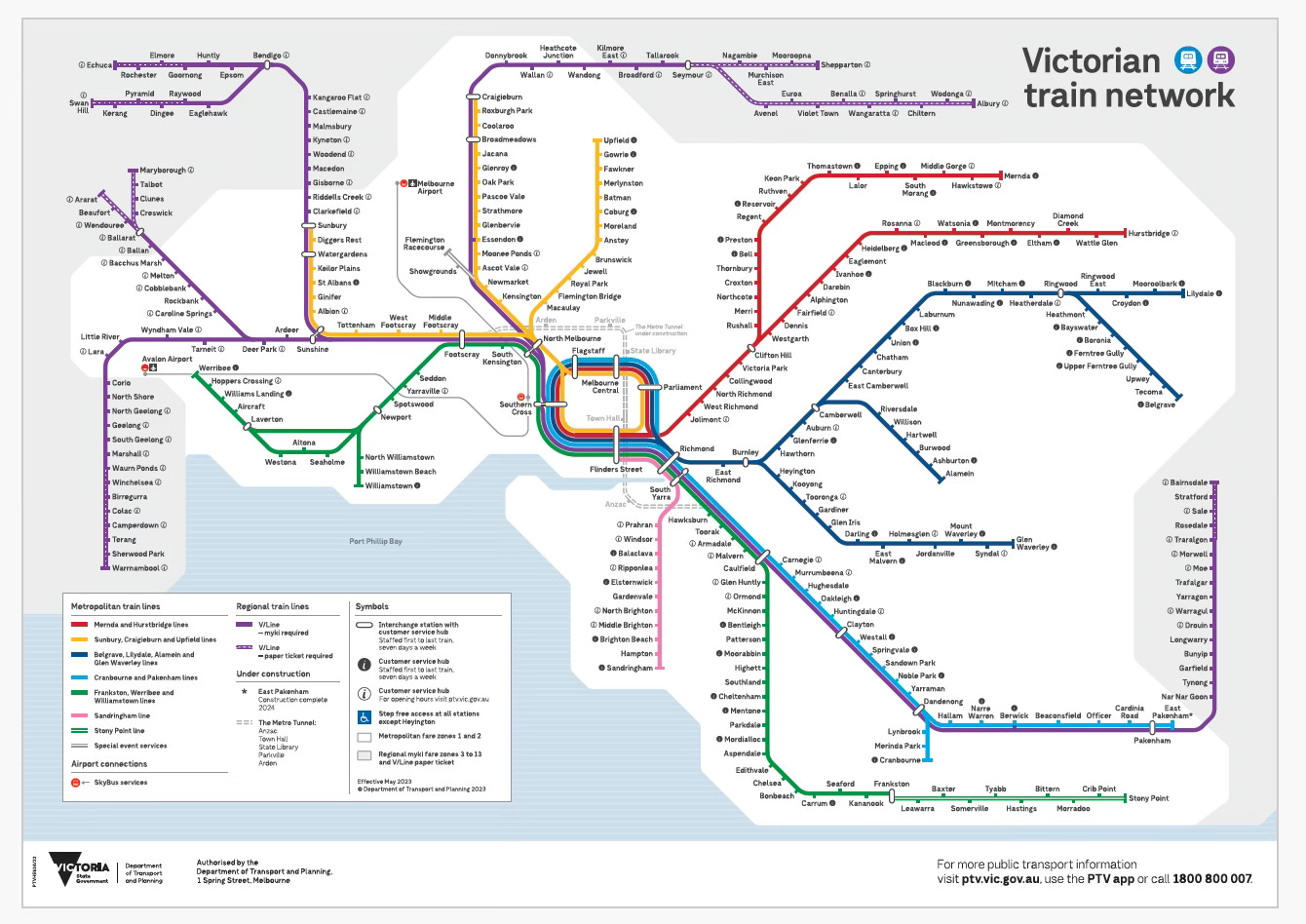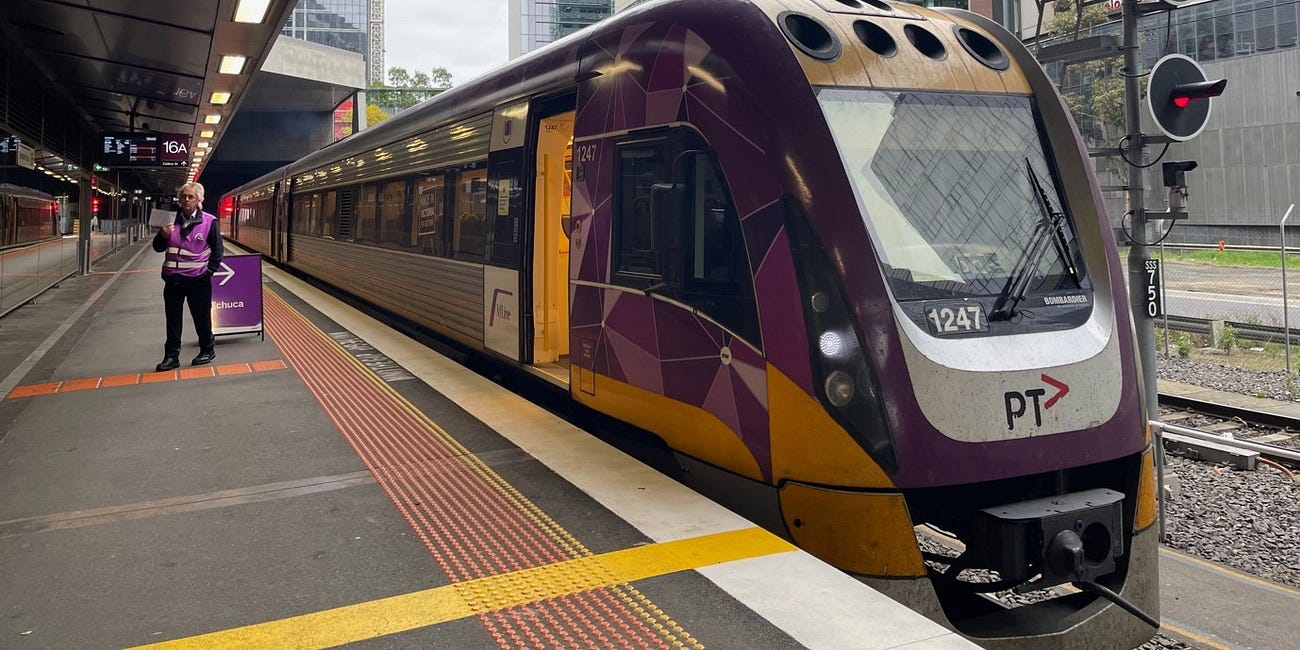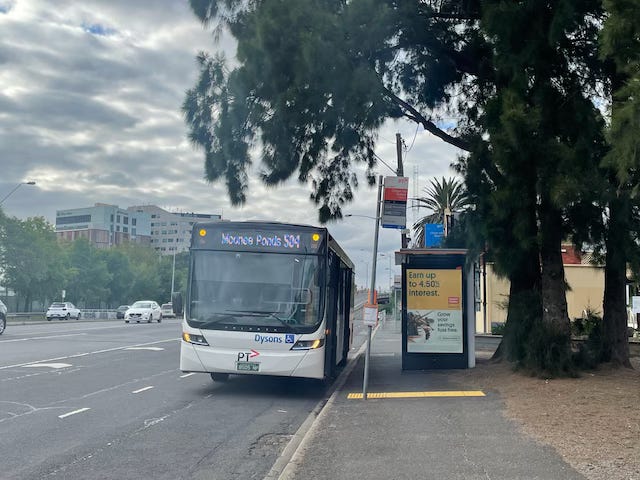Melbourne - A great public transport city or a work in progress? Actually both.
Melbourne's public transport is certainly extensive, but it isn't always as intensive as it could be, with definite room for improvement.
There’s much to like about Melbourne’s public transport network. The city has an extensive metropolitan and regional train network and the world’s largest tram network. However, frequency isn’t always freedom in Melbourne, on large parts of the train network and especially for bus services in outer parts of the city. Buses appear to be the Cinderella that’s never invited to the public transport funding ball, meanwhile the tram network is often not fully accessible and often lacks adequate on-road priority. So there is plenty of room for improvement.
But first, let’s accentuate the positive before diving into the room for improvement.
Metropolitan and regional rail
Melbourne certainly has an extensive metropolitan public transport network. The tram network at around 250 kilometres is the longest in the world and the metropolitan rail network has 17 lines and 219 stations across 405 kilometres.
This is supplemented by an impressive state-wide regional rail network of 1,712 kilometres which was the subject of a previous piece. If you haven’t read it, check it out here. ‘
Victoria’s Rail Revival – a Role Model for Aotearoa?
Railways were one of the great inventions of the Victorian era. They transformed mobility in Great Britain and the entire world, including Aotearoa, opening up vast new possibilities for business, interpersonal connections and enabling everyone to travel for leisure for the first time. This transformational power of rail was critical to the development …
While the metropolitan rail network is certainly comprehensive, it certainly isn’t always frequent with strong differences in service levels not justified by any sound public policy rationale. The Frankston Line has the good fortune to run through the south east mortgage belt, which in itself is chock full of marginal electorates. So it gets 10-minute train service every day of the week. But the strongly Labour voting western part of the city does not do so well with train service. If you are dependent on V/Line service, you will only get hourly weekend trains from Melton and a weekend train every 40 minutes from Wyndham Vale and Tarneit.
The iconic trams
Yes, Melbourne is the tram capital of the planet, at least in terms of track kilometres with a 250-kilometre tram network. But it’s not the tram capital in terms of priority and accessibility. Only around a fifth of the tram network has tram priority with the remaining 200 kilometres or so of track running in mixed traffic, with middle-of-the-street boarding and alighting into live traffic lanes. Accessibility for passengers with mobility challenges is quite an issue with frequently inaccessible trams and mostly inaccessible stops. The supreme irony is that accessible stops are sometimes served by inaccessible trams and accessible trams mostly serve inaccessible stops. While accessible stops are reasonably common in the city centre, they are reasonably rare in the suburbs.
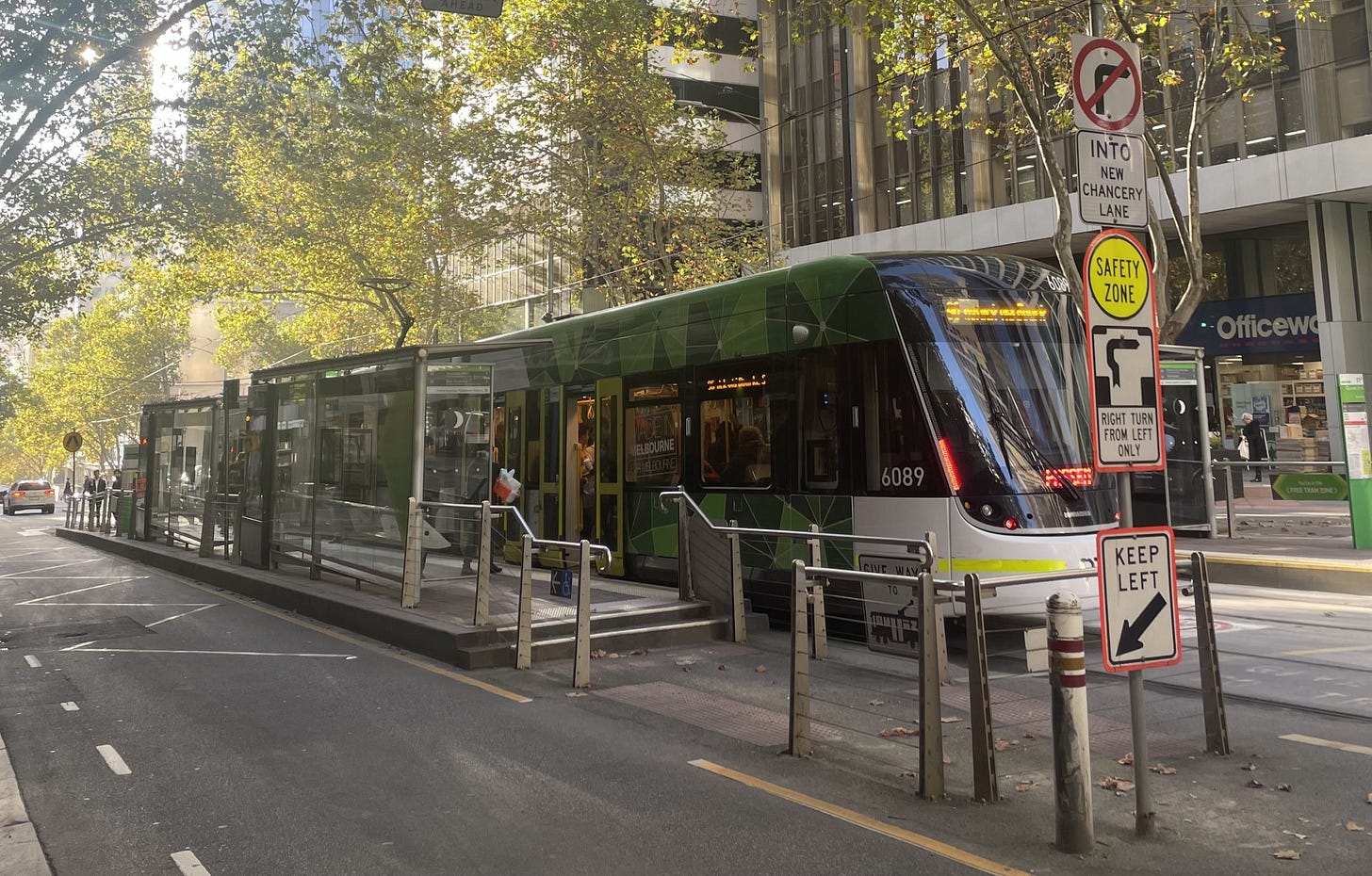
The bus as the Cinderella mode
When I was studying at La Trobe University in Melbourne, I often took the 504 Moonee Ponds to Clifton Hill bus to connect to the 86 tram at Clifton Hill. This is a major east-west crosstown bus route that crosses many key north-south train and tram routes. Back in my uni days in 1987, it ran every 40 minutes on weekdays. Now in 2024, it’s slightly better at every 30 minutes on weekdays and every 40 minutes at weekends. At the same time as cross-town buses languish with dismal frequencies and virtually no bus priority, the state of Victoria is investing an estimated $34.5 billion in just the first stage of the Suburban Rail Loop from Cheltenham to Box Hill.
$34.5 billion sure would buy you a lot of bus priority and frequency on major cross-town routes within Metropolitan Melbourne.
This brings me to the sad tale of route 800 - Dandenong to Chadstone via Princes Highway. By any standards, this service connects major trip attractors and centres via a major transport corridor. But if you are unfortunate enough to live along Route 800, you’d better settle for spending your Sundays at home as there is no Sunday service. It could be argued that providing Sunday bus service on Route 800 would provide better value for public money than the mega-investment in the Suburban Rail Loop.
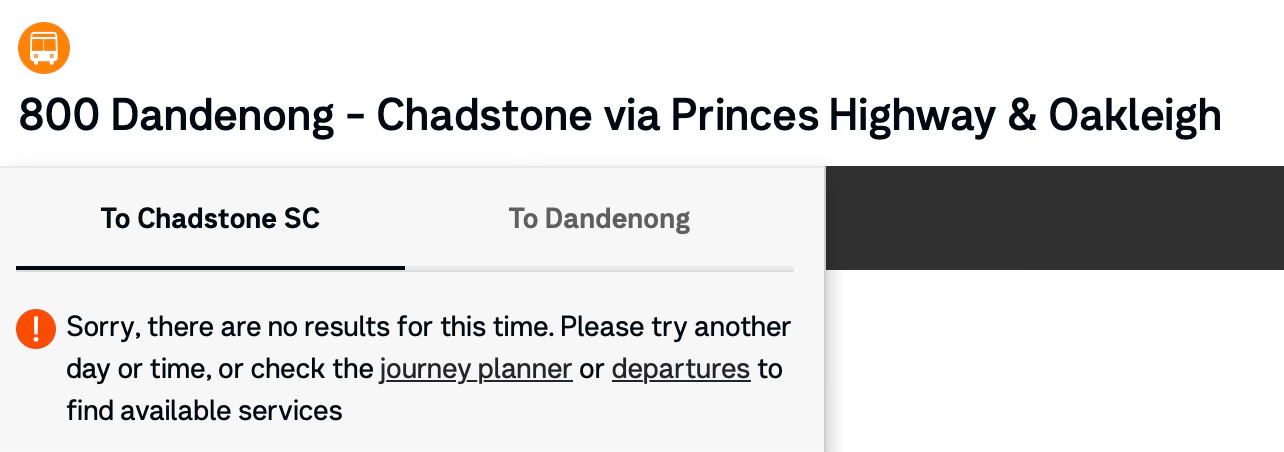
The Fix 800 Bus Campaign is doing an amazing job of highlighting the obvious inequities in the Melbourne bus network, especially Route 800, and is a campaign well worth supporting.
Smart Buses and the curious case of the 901
While bus priority in Melbourne is rare, there are a number of so-called SmartBus routes. According to Wikipedia, SmartBus is made up of “ nine key cross-town and orbital bus routes around Melbourne. Key aspects of the service include more frequent services, extended hours of operation to include late evening and Sunday services. improved timetable information at bus stops, roadspace priority along certain routes and priority at particular traffic lights.”
However, the most recent SmartBus implementation was 14 years ago in Doncaster in 2010. And there are still plenty of corridors across Melbourne that would significantly benefit from an expanded SmartBus network.
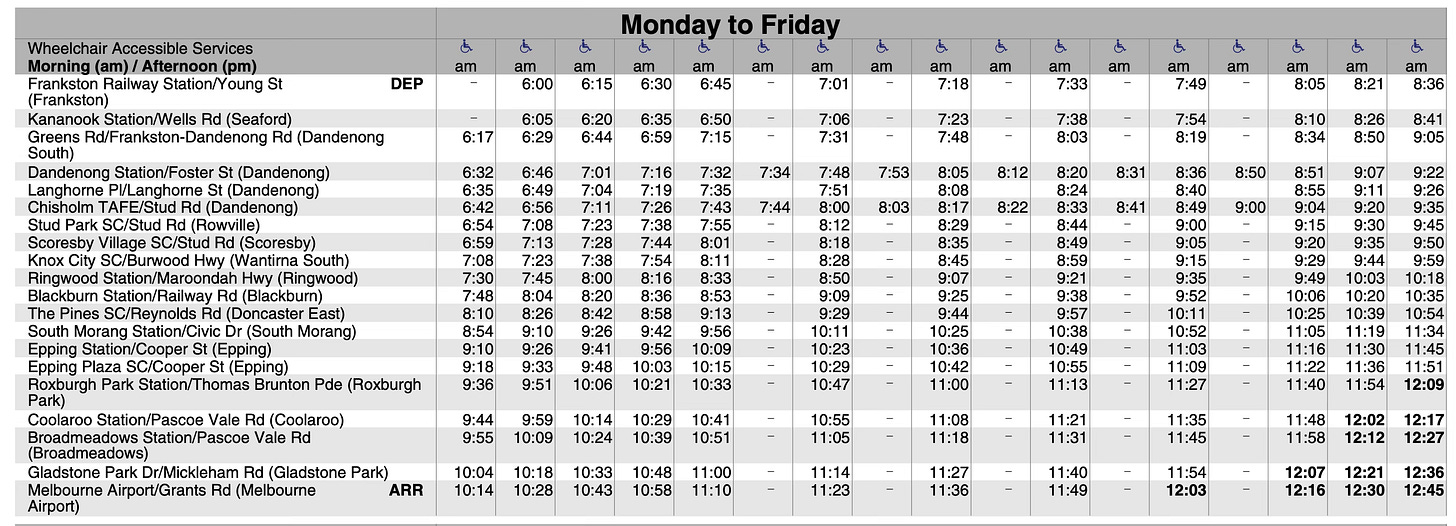
However, I can’t omit the curious case of the 901. This “SmartBus” runs from Frankston Station to Melbourne Airport. The first bus leaving Frankston Station at 6:00 gets you to Melbourne Airport nearly four and a half hours later at 10:28. At a whopping 115 kilometres long route 901, according to Wikipedia, is still only the second longest bus route in Melbourne. I struggle to see how a bus that takes four and a half hours from end to end could be called a Smart Bus.
Final thoughts
Most visitors to Melbourne only experience the good parts of Melbourne’s public transport network such as free trams in the city centre and frequent trams to key visitor destinations such as St Kilda. But the reality of Melbourne’s public transport is that it is a very mixed bag, and at the bottom of that bag is the humble bus, the workhorse of local connectivity in outer parts of Melbourne. Perth amply demonstrates that frequent buses connected to frequent trains is a recipe for the best possible public transport for suburbia. While Melbourne’s tram network may be the largest in the world, it is far from being the fastest or the most accessible. Frequency is freedom when it comes to any form of public transport, and when the Metro Tunnel is completed, hopefully unblocking the core of the rail network will unlock frequent all-day, everyday rail service across the Metropolitan rail network.
So while there’s a lot to like about Melbourne’s public transport, there’s also a lot of room for improvement.




